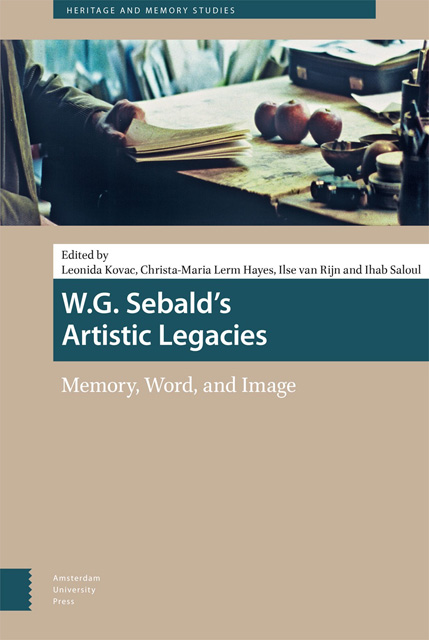5 - Monument and Memory
Published online by Cambridge University Press: 26 October 2023
Summary
Abstract
This paper is based on a body of research and photographs titled Shelter. Acting as a form of recovery and monument to its legacy, it focuses on a former Second World War RAF bomber station: a place where memory, trauma, and loss are all embedded. They address Britain’s postwar distain for the air campaigns and what Sebald described as Germany’s “individual and collective amnesia” in refusing to confront the resulting catastrophe of the shattered cities. “Horrors” and silence, which, he claimed, cast a shadow over his life. In The Rings of Saturn, Sebald wrote about the image of bomber squadrons embarking on their nightly missions over Europe. These raids set out from bases situated across the East of England. Most stations were temporary and after the war were reclaimed by farming, landowners, and nature. Sebald lived in Norfolk, once home to over fifty Second World War bomber stations, and he would often walk around one such base imagining the horror the airmen were about to encounter and inflict. In 2014, I made a series of photographs on one of these decommissioned stations depicting a series of woodpiles and corrugated metal structures (built to store wood and repel rain) that I encountered as I walked the overgrown perimeter track of the former Second World War RAF base at Hethel, Norfolk—a base situated just seven miles from Sebald’s former home in Poringland, Norwich. Built from the enveloping coppiced woodland and sitting amongst the last vestiges of dilapidated military buildings, perimeter tracks, and barbed wire, these woodpiles allude to a form of shelter reminiscent of the aircraft hangers, bomb shelters, and accommodation huts originally found on the camp. They also reference the forest camps described by Primo Levi, and, intriguingly, mirror Sebald’s vision of Cologne and other bombed-out cities across Europe at the end of hostilities.
Keywords: Second World War, Military, Landscape, Destruction, Memory, Infrastructure
In 2014 I was invited to make a body of work for an exhibition titled, Monument. The resulting work was exhibited in a larger group show at the Sainsbury Centre for Visual Art, Norwich and Musée des Beaux-Arts de Calais, France.
- Type
- Chapter
- Information
- W. G. Sebald's Artistic LegaciesMemory, Word, and Image, pp. 101 - 114Publisher: Amsterdam University PressPrint publication year: 2023



